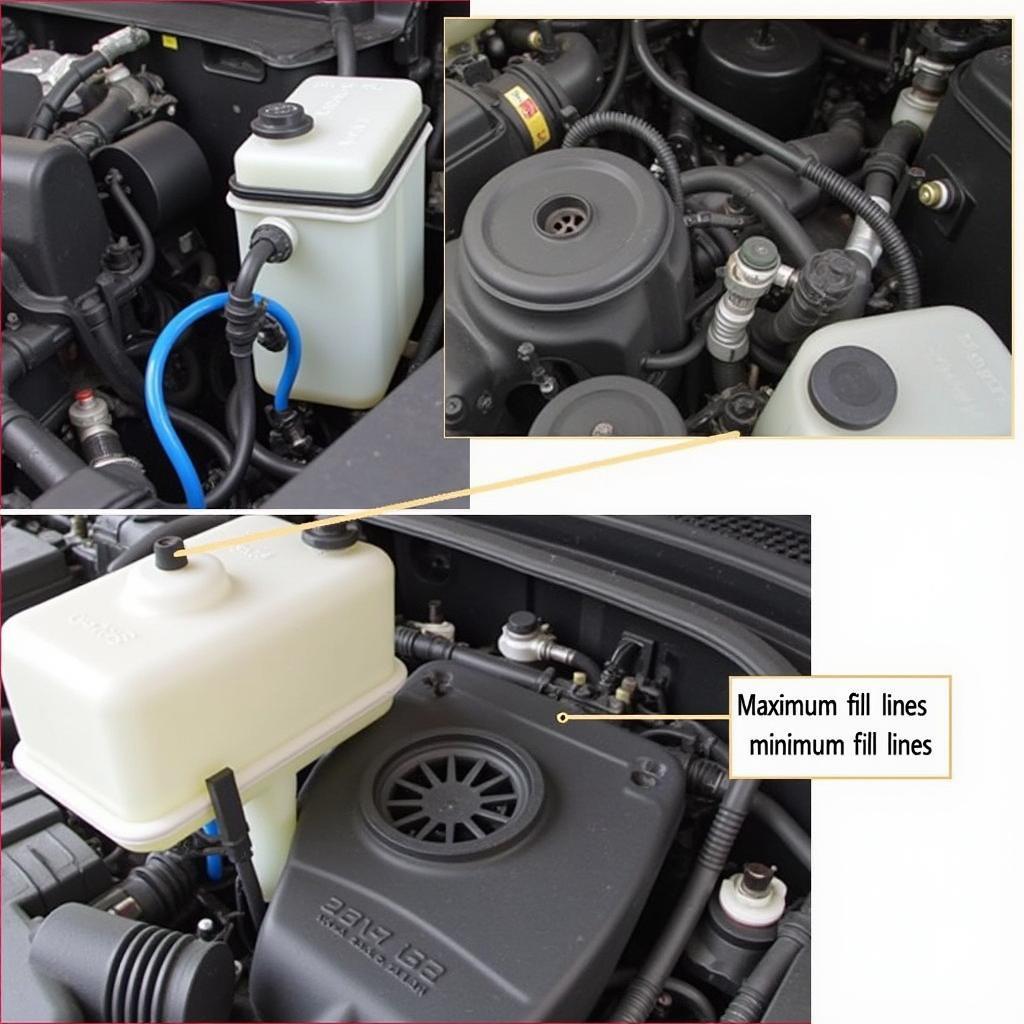The brake actuation warning system is a crucial safety feature in modern vehicles. This system plays a vital role in alerting drivers to potential issues with their braking system, helping to prevent accidents and ensure safe driving experiences. But what exactly triggers this warning system, and what should you do when it activates?
 Brake Actuation Warning Light on Dashboard
Brake Actuation Warning Light on Dashboard
What is a Brake Actuation Warning System?
The brake actuation warning system is your car’s way of communicating a potential problem within the braking system. It’s important to understand that this system is distinct from the Anti-lock Braking System (ABS), although the two often work in conjunction. While the ABS prevents wheel lockup during hard braking, the brake actuation warning system monitors various components within the braking system and alerts the driver if any abnormalities are detected.
Common Reasons for Brake Actuation Warning System Activation
There are several reasons why your brake actuation warning system might activate. Here are some of the most common culprits:
- Low Brake Fluid: Brake fluid is the lifeblood of your braking system. A low fluid level, often caused by a leak, can hinder the system’s performance and trigger the warning.
- Worn Brake Pads: Brake pads naturally wear down over time. As they thin, the brake caliper pistons need to extend further to apply the brakes, potentially triggering the warning system.
- Faulty Brake Sensors: Modern braking systems rely on sensors to monitor various parameters. A malfunctioning sensor, such as the brake fluid level sensor or brake pad wear sensor, can send erroneous signals, activating the warning.
- Issues with the ABS System: Although a separate system, problems with the ABS, such as a faulty wheel speed sensor, can sometimes trigger the brake actuation warning light as well.
What to Do When Your Brake Actuation Warning System Activates
Ignoring a brake actuation warning is never a safe practice. Here’s a step-by-step guide on what you should do:
- Stay Calm and Assess: If the warning light appears while driving, remain calm and safely maneuver your vehicle to the side of the road.
- Check Your Brake Fluid: Carefully open the brake fluid reservoir (refer to your owner’s manual for location). If the fluid level is low, adding brake fluid might temporarily address the issue, but it’s crucial to have the system inspected for leaks.
- Inspect Your Brakes: If possible, visually check your brake pads for excessive wear. Thin pads should be replaced immediately.
- Seek Professional Help: If you’re unable to identify the cause or are uncomfortable troubleshooting further, it’s best to have your vehicle towed to a trusted mechanic or dealership.
 Mechanic Inspecting Car Brakes
Mechanic Inspecting Car Brakes
Remote Diagnostics and Software Solutions
In today’s technologically advanced automotive landscape, remote diagnostics and software solutions are playing an increasingly important role in diagnosing and resolving brake actuation warning system issues.
“Remote diagnostics can often pinpoint the root cause of the problem before a car even arrives at the shop,” says Sarah Thompson, a senior automotive electrical engineer specializing in remote diagnostics. “This allows us to provide faster and more efficient service to our customers.”
Through specialized software and onboard diagnostic ports, technicians can remotely access a vehicle’s computer system to:
- Read Fault Codes: Retrieve diagnostic trouble codes stored in the vehicle’s computer, providing valuable insights into the potential cause of the warning.
- Analyze System Data: Access live data streams from various sensors within the braking system, allowing for real-time analysis and identification of irregularities.
- Perform Software Updates: In some cases, a software update to the vehicle’s control modules can resolve certain brake actuation warning system issues.
Preventing Future Brake Actuation Warnings
While some issues are unavoidable, regular vehicle maintenance can significantly reduce the likelihood of encountering brake actuation warning system problems. Here are some preventative measures:
- Regular Brake Inspections: Have your brakes inspected by a qualified mechanic at least once a year, or more frequently if you drive in harsh conditions.
- Timely Brake Fluid Flushes: Brake fluid can absorb moisture over time, reducing its effectiveness. Follow your manufacturer’s recommendations for brake fluid flushes.
- Pay Attention to Unusual Noises: Screeching, grinding, or any unusual noises coming from your brakes are often early indicators of potential problems.
 Car Owner and Mechanic Discussing Repairs
Car Owner and Mechanic Discussing Repairs
Conclusion
The brake actuation warning system is an indispensable safety feature designed to keep you safe on the road. By understanding the potential causes of this warning and taking appropriate action when it activates, you can help ensure your safety and the well-being of your vehicle. Regular maintenance and prompt attention to any warning signs are essential for optimal braking performance and peace of mind behind the wheel.

